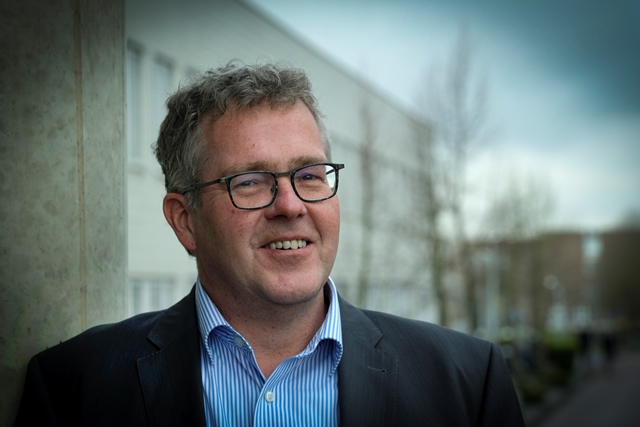The challenge of growing social health inequalities in the era of participation

‘Life at the bottom’
In the first two decades of the 21st century, many European welfare states have been transformed into participation societies: the state has rearranged responsibilities for care in such a way that citizens have to take care for themselves and others – the state assigns vulnerable citizens participatory obligations. In this third decade, the negative consequences can no longer be neglected. People with less education and in lower socioeconomic positions have a worse health status than their better-of counterparts. In The Netherlands, people in lower socioeconomic positions live six to seven years shorter than people in higher socioeconomic positions and their shorter lives are spent eighteen to nineteen years longer with all kinds of illnesses. Income inequalities do not tend to narrow.
On a global scale, the poor might have become less poor, but the rich have become much richer. Social security safety nets are increasingly trimmed down, leaving people increasingly on their own coping with adversities like unemployment, disability, illness, school dropout. If people do not have the economic, personal, or social resources on their own, lifestyles get negatively affected, societal and labour participation becomes compromised and the distance to the ones who have resources becomes increasingly unbridgeable, also in health terms. Apart from that we see that many lower educated people are not politically active and not represented in relevant political processes and public debates.
Hence, inequalities in health and wellbeing, in social networks and resources, and in political participation and power are piling up. In HISP, we give ‘life at the bottom’’ a voice. We explore what health and participation mean for vulnerable people and we tap into often ‘hidden’ resources and knowledges of vulnerable people about the dynamics of health inequalities. To disentangle the dynamics and find targets for intervention, we also let numerical data speak. The focus is on whether and how unhealthy residential, work, social, and societal environments accumulate at the “bottom” and contribute to health inequalities in for example infectious diseases and type 2 diabetes. Giving voice is a part of solution in itself, as the Healthy HR project clearly demonstrates. In addition, our projects point at structural causes of health inequality that have been neglected for too long.
Text: Prof.dr. Hans Bosma

Contact
Prof.dr. Hans Bosma
hans.bosma@maastrichtuniversity.nl
Projects and people (examples)
The MAISE-toolkit: a dialogue-based approach to improve the health of workers with a low socio-economic status
Prof. dr. Angelique de Rijk
Dr. Inge Houkes
Prof. dr. Hans Bosma
Inequities in type 2 diabetes: the role of environmental injustice and chronic stress
Prof. dr. Hans Bosma
Dr. ir. Annemarie Koster
Canadian round table: Country differences in the health and income protection of low wage and digital employment in the context of the Covid pandemic
Prof. dr. Angelique de Rijk
Work-related support for MUMC+ patients with chronic health conditions: from policlinic to workplace & The Next Step
Prof. dr. Angelique de Rijk
Maarten Butink
(Prof. dr. Annelies Boonen)
(Emmelie Hazelzet)
Collaboration (examples)
Researchers have many local, national, and international partners with whom they collaborate, sometimes already for decades. Some of the partners with whom shared output was created (e.g. articles, Phd theses) are reported below.
- Living Lab Public Health Limburg
- Centraal Bureau voor de Statistiek (CBS)
- LASA cohort research team (Amsterdam)
- GLOBE cohort research team (Rotterdam)
- MAAS cohort research team (Maastricht)
- Maastricht Study research team (Maastricht)
- Heinrich Heine Universitat/Medizinische Soziologie (Düsseldorf)
- Ulm Universität (Prof. dr. Richard Peter)
- WUN project (inequalities due to covid)
- UM Diversity project (Nagelhout)
- School of Public Health Sciences, University of Waterloo
Our most important scientific output
- Hazelzet E, Houkes I, Bosma H, de Rijk A. How a steeper organisational hierarchy prevents change-adoption and implementation of a sustainable employability intervention for employees in low-skilled jobs: a qualitative study. BMC Public Health. 2022 Dec 17;22(1):2373.
- Consolazio D, Koster A, Sarti S, Schram MT, Stehouwer CDA, Timmermans EJ, Wesselius A, Bosma H. Neighbourhood property value and type 2 diabetes mellitus in the Maastricht study: A multilevel study. PLoS One. 2020 Jun 8;15(6):e0234324.
- MacEachen, E., de Rijk, A., Dyreborg, J., Fassier, J. B., Fletcher, M., Hopwood, P., Koivusalo, M., Majowicz, S., Meyer, S., Ståhl, C.& Welti, F. (2022). Laws, Policies, and Collective Agreements Protecting Low-wage and Digital Platform Workers During the COVID-19 Pandemic. NEW SOLUTIONS: A Journal of Environmental and Occupational Health Policy, 32(3), 201-212.
Societal impact
Social impact is created by looking for opportunities to improve the situation of disadvantaged or vulnerable groups. Targets are studied bottom-up by participatory methods that are common in action research. Targets are also sought in state of the art quantitative research aimed at finding environmental factors that more insidiously and negatively affect the health of people living in ‘unhealthy’ environments. Some examples are:
- In the project of Rijk, Houkes, and Bosma, a tool has been created aimed at improving the health and sustainable employment of low-skilled workers. The tool was created in dialogue and has to be applied in dialogue with workers to have tailored organizational interventions. HR managers are advised to use the tool, as it has been found effective.
- In the project ‘Work-related support for MUMC+ patients with chronic health conditions: from policlinic to workplace”, which is continued with a grant from the MUMC+ the Next Step call, a tool (Werk en Wijzer) was developed with 9 stakeholders representing hospitals, experts and patients, to support assessment of the patient’s working situation and support possibilities. As 40% of the Dutch workers do not work under a permanent contract, they lack (continuous) access to an occupational physician. The tool was particularly developed to encourage health care professionals to point patients with vulnerable work statuses (e.g. zero-hour contracts) at their rights and possibilities for working in a healthy way.
Researchers (senior)
- Prof. dr. Hans Bosma, Professor of Social Epidemiology
- Dr. Nicole Dukers-Muijrers, Associate Professor Health Promotion | Coordinator research at the department of Infectious Diseases, GGD South Limburg
- Prof. dr. Klasien Horstman, Professor of Philosophy of Public Health
- Dr. Inge Houkes, Associate Professor at the department of Social Medicine
- Dr. Annemarie Koster, Associate Professor at the department of Social Medicine
- Dr. Agnes Meershoek, Associate Professor at the Department of Health,Ethics and Society
- Dr. Rianne Reijs, Researcher at the Department of Social Medicine | Programme leader Living Lab Youth, GGD South Limburg
- Prof. dr. Angelique de Rijk, Professor of Work and Health, specialising in Re-integration into Work
